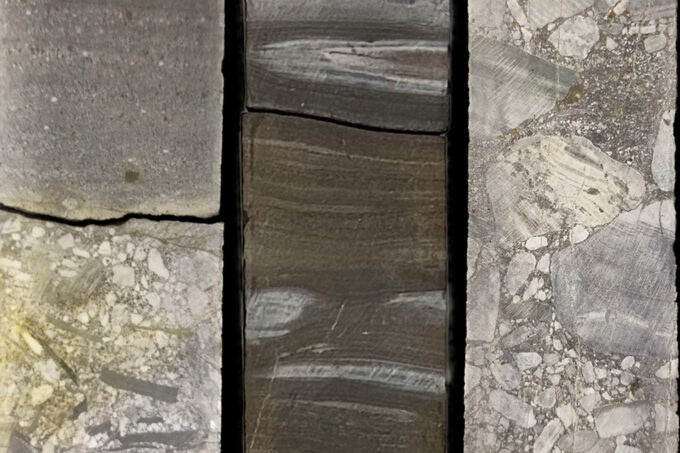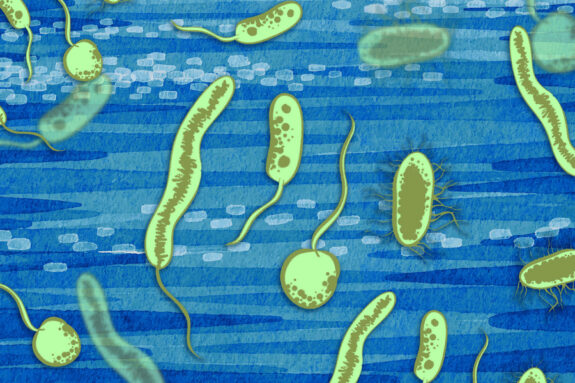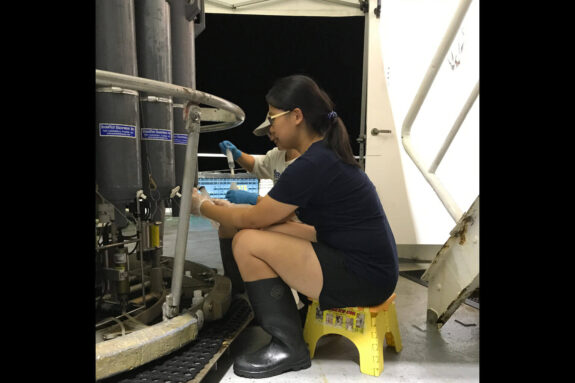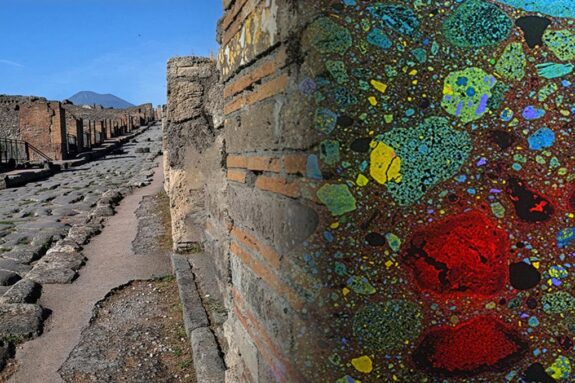3Q’s: Demystifying Earth’s Ancient Nitrogen Cycle

Samples from some of Earth’s oldest rocks show evidence of an aerobic nitrogen cycle 100 million years earlier than previously thought, shedding new light on when oxygen accumulated on Earth. Images courtesy Ben Uveges
Today, oxygen is essential for much of life on Earth and is involved in many biological processes, including cellular respiration. But early Earth lacked an oxygen-rich surface until the Great Oxidation Event (GOE), a period during which oxygen began to accumulate across Earth’s surface environments. This transition is thought to have concluded approximately 2.3 billion years into Earth’s past.
For decades, researchers from around the world have searched Earth’s rock record for signals of when oxygen first began to accumulate on the planet’s surface. These signals record oxygen’s impact on other elements, including sulfur, metals, and nitrogen, which are preserved in rocks for multi-billion-year timescales.
In a study published in PNAS, former MIT postdoctoral associate Benjamin Uveges and his colleagues looked for these signals in nitrogen preserved in marine sedimentary rocks from South Africa and found that they occurred earlier than previously thought. Here, Uveges, who led the project in MIT’s Department of Earth, Atmospheric and Planetary Sciences (EAPS), talks about how examining the nitrogen cycle can shed light on the GOE.
Q: How does studying the GOE improve our understanding of the evolution of complex life?
A: Pinning down the timing of the rise of oxygen is fundamental to our understanding of how we as humans came to exist – it is a central piece of our collective history. We, along with essentially all complex multicellular life as we know it, require oxygen to perform respiration. This was not always the case, and oxygen, when it first started building up, would have been toxic to most forms of life. It would have wreaked havoc on many biological processes. This is because many of the enzymes organisms use for essential functions, along with the chemicals they need to survive, are sensitive to the presence of oxygen. So, understanding the timing of shifts in oxygen content in the oceans and atmosphere gives us insights on the pace of biological evolution in the face of oxidation and its impact on the Earth’s surface on the long road to complex eukaryotic life.
Q: Why do we want to look at the nitrogen cycle at this time in history?
A: Nitrogen is a bio-essential element, and the form that dissolved nitrogen takes is strongly dependent on the presence or absence of oxygen in the ocean. This can have a profound impact on marine organisms because, prior to the GOE, life evolved to primarily use nitrogen in its most reduced form, called ammonium. So, once nitrogen started to increasingly exist in a more oxidized dissolved form, nitrate, organisms had to adapt and update the biochemical machinery they used to take in, process, and use nitrogen to make things like DNA or proteins. This means that aside from telling us something about the broader oxidation state of the ocean and the atmosphere, studying the nitrogen cycle around the time of the GOE helps us understand when this evolutionary threshold, where life needed to acquire such a critical nutrient in a new, less bioavailable form, was reached.
Q: How does this impact our understanding of the GOE?
A: Colloquially, most people would say that the “Event” in the “Great Oxidation Event” is associated with the major rise of oxygen in the atmosphere roughly 2.3 billion years ago. But, it is increasingly being recognized that the buildup of oxygen in the ocean began much earlier, maybe as early as 2.7 billion years ago, and there is some evidence that there were several “episodes” of atmospheric oxygenation prior to the major shift at 2.3. Our study on the nitrogen cycle adds to the growing body of evidence that the route to atmospheric oxygenation was tumultuous, and that a critical threshold was crossed in the ocean around 100 million years earlier. This all fits with the idea that the protracted nature of the GOE may have been the result of a prolonged, epic struggle between organisms trying to take advantage of the energy gains of oxygenic photosynthesis, and life’s gradual innovations to deal with its byproduct, oxygen.


